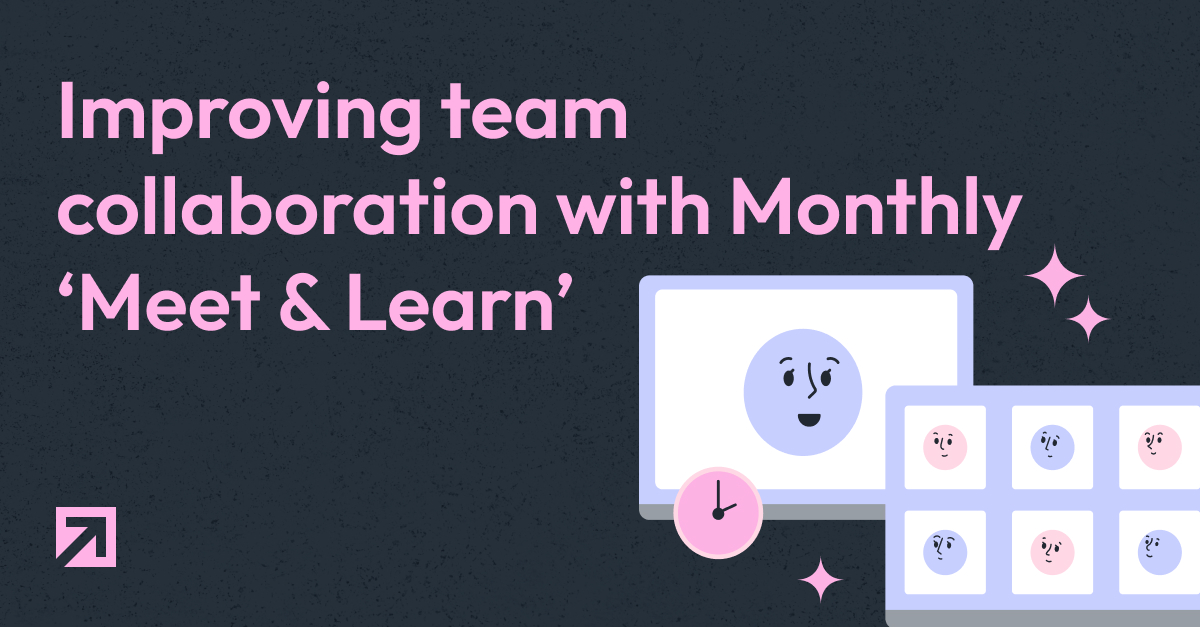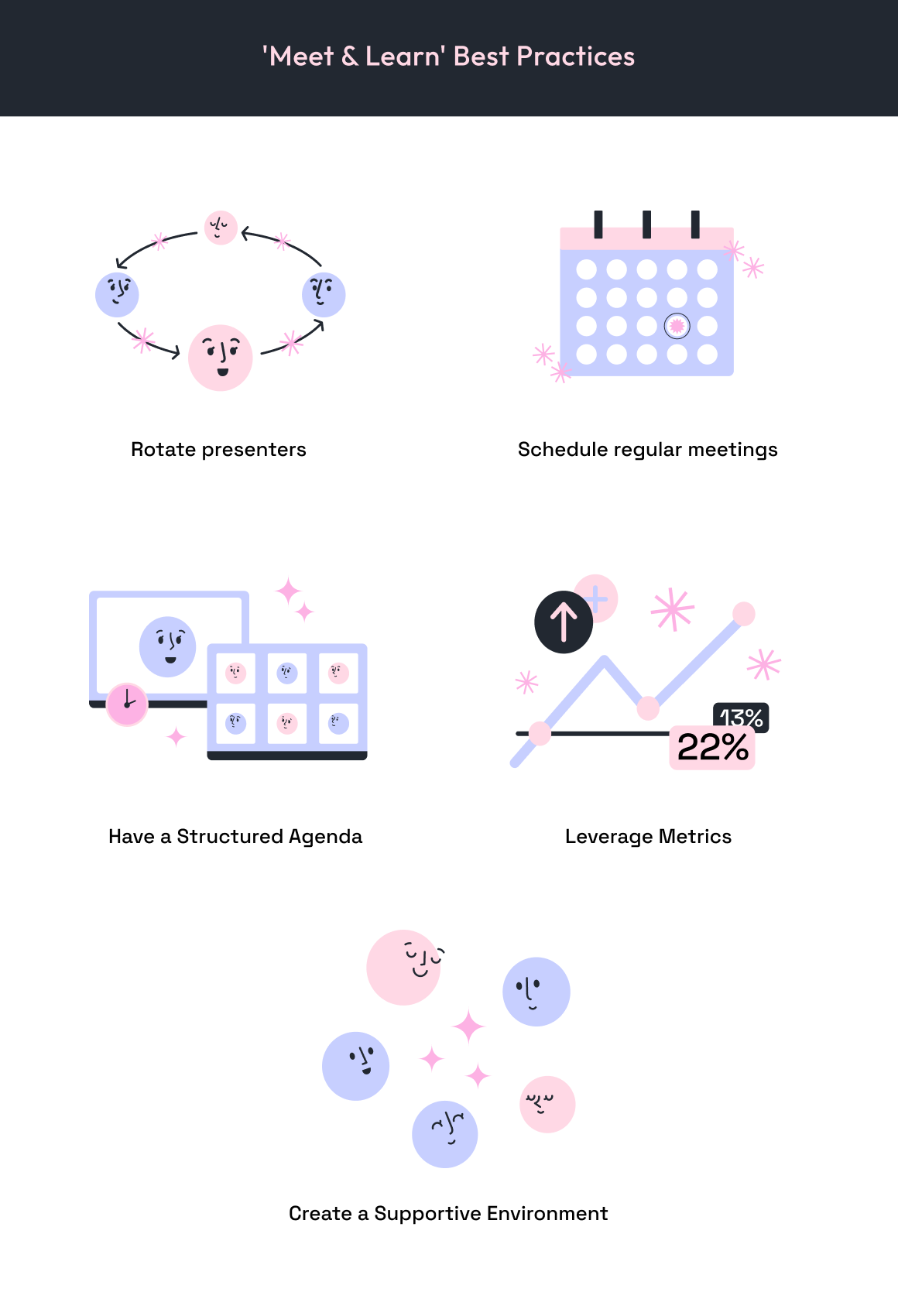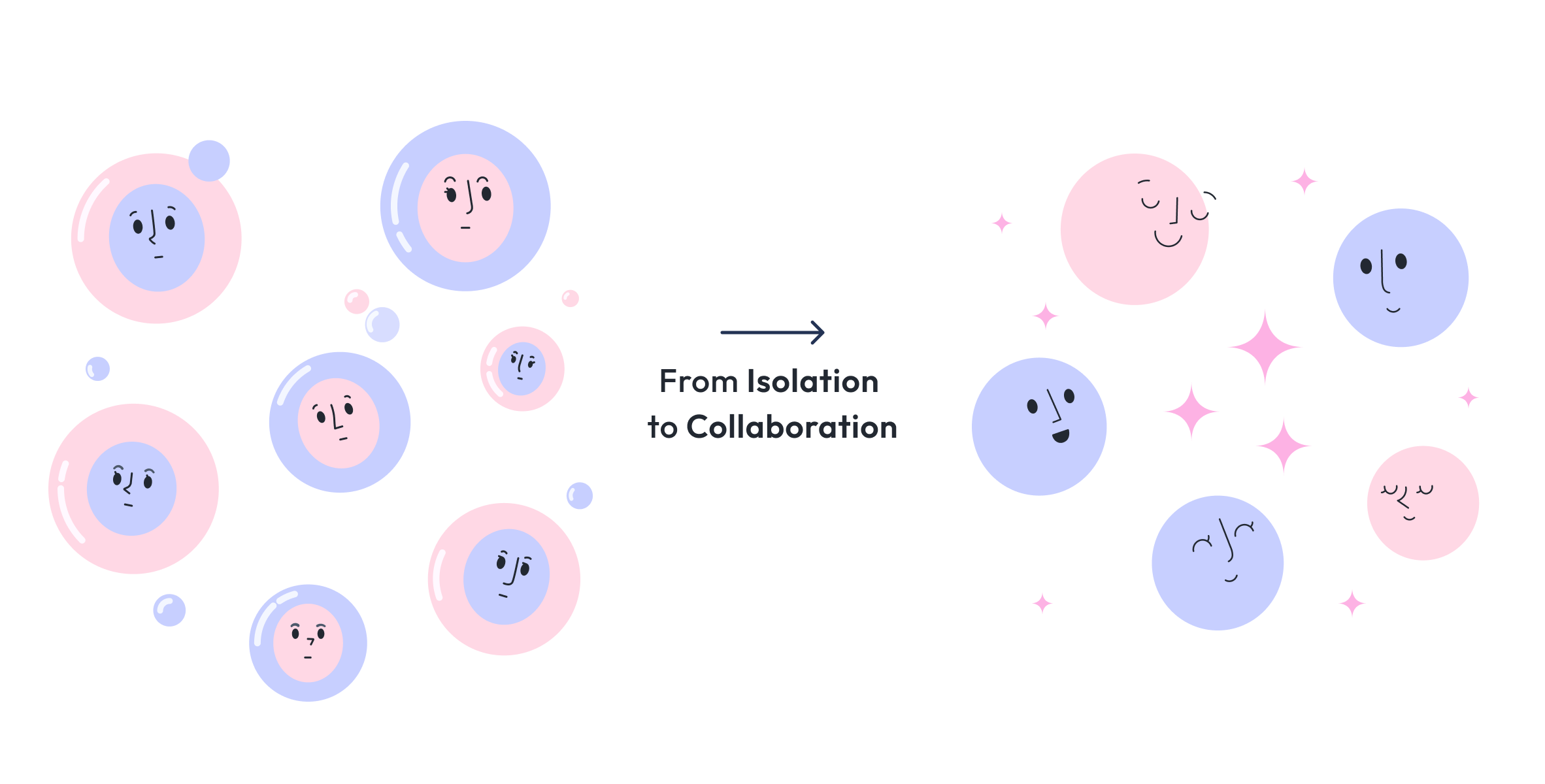

Have you ever been so caught up in your projects that you barely get to share experiences or learn from your colleagues? We've all been there, buried in tasks with little room for collaboration. In the fast-paced world of tech, this can be particularly challenging. We often miss out on valuable insights and innovative ideas because we’re too focused on our day-to-day work.
This situation was no strange to the Xmartlabs Delivery Team, and we wanted to change that. The result? Our new monthly 'Meet & Learn' sessions. These meetings became a game-changer for us and have transformed how we work, turning our isolated efforts into a collaborative powerhouse. In this post, I'll share the process of defining and carrying out these meetings and their impact on our team culture.
Identifying the Problem
Our Delivery team was so focused on individual projects that we rarely had time to collaborate or shared insights. This siloed approach led to missed opportunities for learning and innovation and left us feeling disconnected from each other. We were each working hard but not necessarily working smart.
We often discussed the potential benefits of sharing experiences and applying them to our projects to solve similar problems and improve consistency in our practices. However, despite recognizing this need, we lacked a frequent, relaxed, and focused environment that facilitated such exchanges.

The Impact of Team Isolation
The impact of working in silos cannot be underestimated. When team members don’t communicate regularly, knowledge becomes fragmented. The expertise one person gains from a particular project may never reach others who could benefit from it. This not only holds individual growth but also restricts the overall progress of the team.
Moreover, the sense of isolation can lead to reduced morale and engagement. Team members may start to feel like parts of a machine rather than valued contributors to a shared mission. In a field as dynamic and demanding as tech and with such a high turnover, maintaining a motivated and connected team is crucial for success.
The Solution
The idea for these sessions came from our internal OKRs (Objective and Key Results) quarterly planning meetings. Initially, we considered QBRs (Quarterly Business Reviews) to tackle this disconnection challenge, but those were more client-focused and centered on business health. We needed something whose sole purpose was to enhance internal collaboration and knowledge sharing.
That's how we came up with the monthly 'Meet & Learn' sessions. During these sessions, a team member presents a project they are working on. It's an opportunity for everyone to discuss issues, share tips, and propose ideas. This format has been an incredible way to foster collaboration and learning, ensuring that valuable insights are shared across the team. But because there are no perfect solutions, we also took up some measures to ensure we could take advantage of these instances as much as possible. Below I will share some of these best practices.

Be Consistent
We started by scheduling regular meetings. Consistency is critical, so we ensured to block out time every month. This regularity helps everyone know when to expect the sessions and plan accordingly. We created a culture of continuous learning and collaboration by making these sessions a key part of our calendar.
Rotate Presenters
We decided to have rotating presenters. Each month, a different team member takes the stage to present one of their projects. This approach keeps the sessions fresh and allows everyone to share their work and insights. It also democratizes the learning process, ensuring that everyone, regardless of their role or experience level, has an opportunity to contribute and lead.
Have a Structured Agenda
We structured the sessions into two parts:
- Presentation (30 minutes): The presenter introduces their project, including any problems or opportunities they want feedback on. This segment allows the presenter to showcase their work and set the stage for collaborative problem-solving.
- Discussion (30 minutes): We brainstorm solutions, share tips from our experiences, and propose new ideas. This collaborative effort benefits everyone and often leads to innovative solutions that might not have emerged in isolation.
Additionally, this discussion phase can lead to follow-up meetings between members to ideate and tackle similar problems within their projects. These follow-ups can further deepen the collaboration and learning that began in the 'Meet & Learn' sessions.
Leverage Metrics
A valuable tip is to leverage metrics during presentations. If you work with metrics, use this opportunity to present them. Supporting your hypotheses with quantitative data is always helpful and can motivate other Project Managers to start using metrics as well. Data-driven discussions tend to be more impactful and can lead to more concrete action plans.
Create a Supportive Environment
From my experience, keeping the sessions informal and encouraging is beneficial. This approach makes everyone feel comfortable sharing their thoughts. Avoid pushing people to participate if they are not ready; we want them to see this as an opportunity to learn and collaborate, not an obligation. Creating a supportive environment where everyone feels safe to share their ideas and challenges is crucial for the success of these sessions.
My Experience
I've found these sessions to be incredibly rewarding. They have not only enhanced my understanding of various projects but also helped me build stronger connections with my colleagues. The informal nature of the sessions encourages open dialogue, making it easier to discuss challenges and brainstorm solutions collectively.

Conclusion
Our 'Meet & Learn' sessions have significantly improved our teamwork. By meeting regularly, rotating presenters, and fostering open discussions, we've created a space for collaboration and learning. These sessions have transformed our work culture, turning isolated efforts into collective achievements.
I highly recommend trying something similar with your team. Whether you're a manager, project manager, or tech professional, creating a structured yet flexible knowledge-sharing environment can have profound benefits. It can enhance your team's cohesion, drive innovation, and ultimately lead to better project outcomes. But being very intentional about it is vital.
Don't let the fast pace of work prevent you from tapping into the collective wisdom of your team. Start small, stay consistent, and watch the magic of collaboration unfold.

